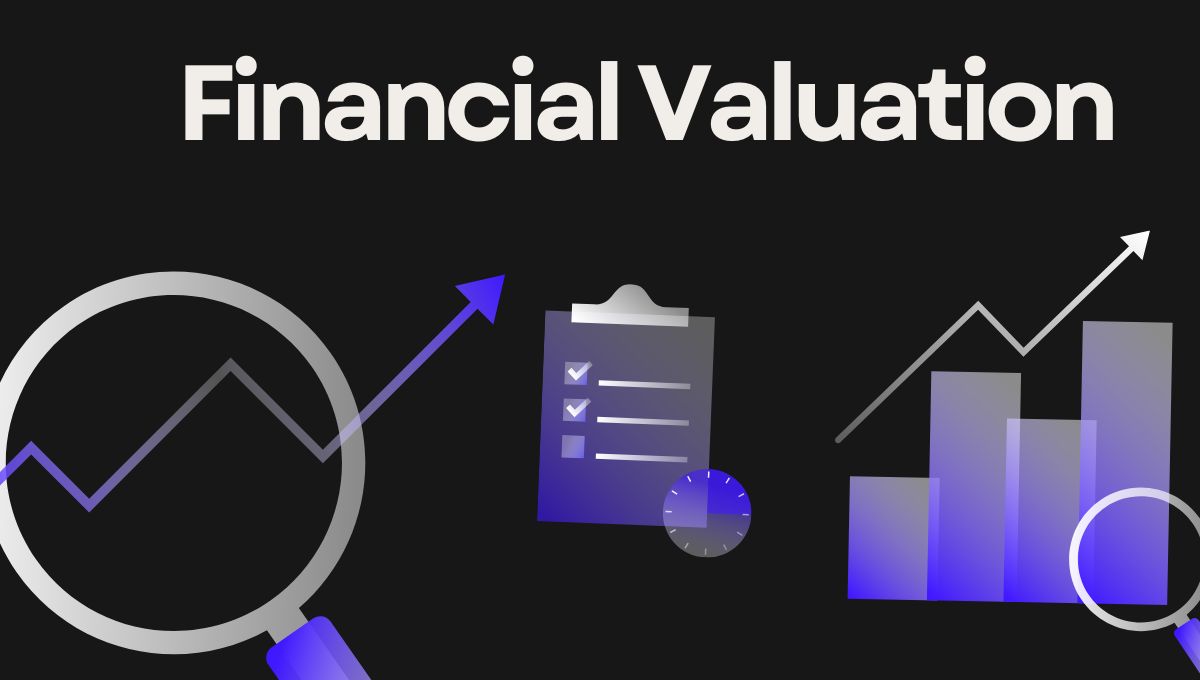How do professionals truly measure a business’s value? Financial valuation lies at the core of major decisions, whether you’re a financial analyst, an entrepreneur, or an investor understanding complex markets.
Among the tools used, Discounted Cash Flow Analysis (DCF) and the Capital Asset Pricing Model (CAPM) are two of the most effective techniques, each with its unique strengths.
But how do they differ, and when should you use one over the other?
Let’s dive deeply into these financial valuation methods, exploring the ins and outs of DCF and CAPM and why mastering these models is crucial.
Understanding Financial Valuation: Why It Matters
Financial valuation allows us to assess a business’s worth, which is essential for everything from mergers and acquisitions to individual investments. But behind these figures, financial valuation translates a business’s future potential into today’s terms.
It’s exciting and challenging, especially with models like the DCF and CAPM, which provide rigorous methods to quantify value. Imagine you’re considering buying a small tech company.
Would the investment pay off?
This is where Discounted Cash Flow Analysis and the CAPM Model in Valuation come into play. While both methods aim to determine value, each approaches it differently.
The DCF model relies on projected cash flows, whereas the CAPM model zeroes in on market risk. Each method provides insights that reveal a company’s value through a different lens.
Discounted Cash Flow (DCF) Analysis: Predicting Future Value
Discounted Cash Flow Analysis helps determine the present value of a company by projecting its future cash flows. Essentially, it’s a method used to assess whether an investment today will generate a return in the future, factoring in time and risk.
To perform a DCF analysis, an investor must estimate future cash flows and the eventual value of assets like investments or equipment. Additionally, selecting an appropriate discount rate is essential and will depend on various factors, including the investor’s risk profile and the broader conditions of the capital markets.
How to calculate DCF for company valuation?
In financial analysis, discounted cash flow (DCF) analysis is a valuation method that assesses the worth of a security, project, company, or asset by factoring in the time value of money.
where:
- DPV represents the discounted present value of a future cash flow (FV), adjusted for the delay in receiving it.
- FV is the nominal or face value of a cash flow expected in a future period (adjusted if using mid-year timing).
- r is the interest or discount rate, reflecting the capital cost and the potential non-payment risk.
- n is the time, in years.
Important Facts:
The effectiveness of DCF analysis hinges on the accuracy of these estimates. Conversely, underestimating can make an opportunity seem too costly, leading to potentially missed investments. Therefore, DCF calculations must rely on realistic projections, as overly optimistic or pessimistic estimates can skew the analysis and impact decision-making.
CAPM: Market Risk and Expected Returns
CAPM takes an entirely different approach, focusing on risk and return. The CAPM Model in Valuation calculates an asset’s expected return based on its risk relative to the overall market. In other words, CAPM helps investors assess the expected return, considering the risk associated with a particular stock.
Here’s the CAPM formula:
𝐸(𝑅𝑖) = 𝑅 𝑓 + 𝛽 (𝑅m−𝑅𝑓)
Where:
- E(Ri): Expected return on the investment
- Rf: Risk-free rate
- β: Beta of the investment
- Rm−Rf: Market risk premium
Let’s say you’re evaluating a stock with a beta of 1.2, a risk-free rate of 2%, and a market return of 8%. CAPM allows you to calculate the expected return of 9.2%. Investors use CAPM to decide whether a stock offers sufficient returns for its risk level.
Important Facts:
CAPM is essential in finance as it helps investors assess expected returns based on an asset’s risk relative to the market. By calculating the relationship between risk-free rates, market returns, and an asset’s beta (a measure of volatility), CAPM provides a practical way to understand and manage investment risk. CAPM’s importance in finance lies in its ability to incorporate systematic risk into valuations, making CAPM foundational in modern investment analysis and corporate finance.
CAPM vs. DCF: A Comparison
| Criteria | Discounted Cash Flow (DCF) | Capital Asset Pricing Model (CAPM) |
| Focus | Projected cash flows | Market risk |
| Use Case | Evaluating standalone projects | Assessing required returns on investments |
| Strengths | Accounts for specific cash flow projections | Considers systematic, market-level risk |
| Limitations | Heavily reliant on accurate projections | Assumes efficient markets |
Choosing Between DCF and CAPM
Both DCF and CAPM are powerful financial valuation methods but serve distinct purposes. DCF shines in valuation-heavy scenarios where you have robust cash flow data. It’s ideal for calculating a business’s intrinsic value.
On the other hand, CAPM is invaluable for understanding market-driven investments, especially regarding the relationship between risk and return. By mastering both, you’ll gain a holistic view of valuation.
Learning valuation techniques can open doors to finance, investment, and consulting opportunities. A financial analysis course covering DCF and CAPM provides invaluable insights into today’s complex financial landscapes. You’ll develop practical skills that set you apart, enabling you to make data-driven investment decisions confidently.
Transform Your Finance Career with Imarticus Learning’s Postgraduate Financial Analysis Programme
Valuation is as much a science as it is an art, combining technical knowledge with intuition. By understanding DCF vs. CAPM Techniques, you can evaluate investments and gain a deeper appreciation for the nuances of the financial markets.
Imarticus Learning’s Postgraduate Financial Analysis Programme, a comprehensive 200+ hour course, has empowered over 45,000 professionals to achieve successful career transitions. Designed for graduates with up to three years of finance experience, this programme prepares learners for the CFA Level 1 role in today’s finance market.
With 100% job assurance, Imarticus Learning guarantees seven interview opportunities with leading finance firms. Participants gain essential skills in financial statement analysis, valuation, equity research, and transaction execution alongside advanced Excel and PowerPoint capabilities. The programme’s hands-on approach includes simulation tools, allowing learners to engage in real-world financial planning and analysis.
Enrol Now and Unlock Top Finance Opportunities!


